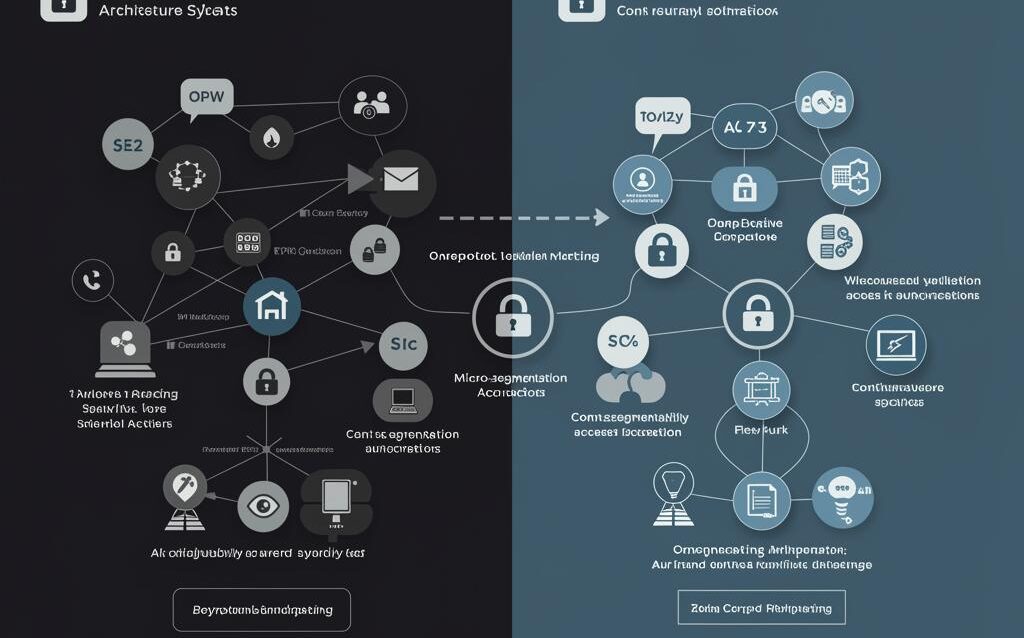BeyondCorp: Ditch VPN, Embrace Zero Trust Access
BeyondCorp Implementation: Moving From VPN to Zero Trust Access
For years, Virtual Private Networks (VPNs) have been the cornerstone of secure remote access, providing a tunnel for employees to connect to internal resources. However, the modern threat landscape and the rise of cloud computing have exposed the limitations of VPNs. BeyondCorp, Google’s implementation of Zero Trust security, offers a more robust and flexible alternative. This blog post will guide you through the journey of transitioning from VPNs to Zero Trust access using the BeyondCorp model.
Understanding the Shortcomings of VPNs
Before diving into BeyondCorp, it’s crucial to understand why VPNs are no longer sufficient for modern security needs. While they offer a degree of protection, they also introduce several vulnerabilities:
- Broad Network Access: Once connected to the VPN, users often have access to a wide range of internal resources, regardless of their actual need. This “implicit trust” creates a large attack surface.
- Single Point of Failure: VPN servers themselves can become targets for attackers. A compromised VPN server can grant access to the entire network.
- Performance Bottlenecks: VPNs can introduce latency and bandwidth limitations, especially with a large number of concurrent users.
- Lack of Granular Control: VPNs typically lack granular access controls based on user identity, device posture, and application context.
- Complex Management: Managing and scaling VPN infrastructure can be complex and costly.
What is BeyondCorp and Zero Trust?
BeyondCorp is a security model that shifts the focus from network perimeter security to individual user and device authentication and authorization. It operates on the principle of “never trust, always verify,” meaning that every user and device, regardless of location, must be authenticated and authorized before accessing any resource.
Key principles of Zero Trust, and thus BeyondCorp, include:
- Verify explicitly: Every user, device, and application is authenticated and authorized before being granted access.
- Grant least privilege access: Users are only granted access to the specific resources they need to perform their job functions.
- Assume breach: Security is constantly monitored and improved to detect and respond to potential breaches.
Implementing BeyondCorp: A Step-by-Step Guide
Transitioning to BeyondCorp is a gradual process that requires careful planning and execution. Here’s a step-by-step guide to help you get started:
1. Inventory and Classify Your Resources
The first step is to identify and classify all of your internal resources, including applications, databases, and servers. This will help you determine which resources need to be protected and what level of access each user should have.
2. Implement Strong User Authentication
Multi-Factor Authentication (MFA) is a critical component of BeyondCorp. Implement MFA for all users, including employees, contractors, and vendors. Consider using hardware tokens, biometrics, or one-time passwords.
3. Enforce Device Posture Checks
Before granting access, verify the security posture of each device. This includes checking for:
- Operating system version
- Antivirus software
- Disk encryption
- Patch management
You can use Mobile Device Management (MDM) or Endpoint Detection and Response (EDR) tools to automate these checks.
4. Implement Context-Aware Access Control
Grant access based on the context of the request, including user identity, device posture, application being accessed, and time of day. This allows you to dynamically adjust access privileges based on the risk profile.
5. Deploy a Secure Access Proxy (SAP)
A Secure Access Proxy (SAP) acts as a gatekeeper for all internal resources. It intercepts all requests, authenticates the user, verifies the device posture, and enforces access control policies. The SAP effectively replaces the VPN as the entry point to your internal network.
Popular SAP solutions include:
- Google Cloud Identity-Aware Proxy (IAP)
- Microsoft Azure Active Directory Conditional Access
- Okta Advanced Server Access
6. Monitor and Log Everything
Continuous monitoring and logging are essential for detecting and responding to security threats. Collect logs from all systems, including user authentication, device posture checks, and application access. Use Security Information and Event Management (SIEM) tools to analyze the logs and identify suspicious activity.
Benefits of BeyondCorp
Implementing BeyondCorp offers several significant benefits over traditional VPN-based security:
- Improved Security: Reduces the attack surface by eliminating implicit trust and enforcing granular access control.
- Enhanced User Experience: Provides seamless access to internal resources without the need for a VPN client.
- Increased Flexibility: Supports a mobile and distributed workforce by allowing users to access resources from anywhere, on any device.
- Simplified Management: Centralizes access control and simplifies security management.
- Reduced Costs: Eliminates the need for expensive VPN infrastructure.
Challenges and Considerations
While BeyondCorp offers many benefits, it’s important to be aware of the challenges and considerations associated with implementation:
- Complexity: Implementing BeyondCorp requires significant planning and technical expertise.
- Integration: Integrating BeyondCorp with existing systems can be challenging.
- User Training: Users need to be trained on the new security protocols and procedures.
- Performance: Ensuring that the SAP doesn’t introduce performance bottlenecks is crucial.
- Cost: Implementing BeyondCorp can be expensive, especially if you need to purchase new hardware or software.
Conclusion
Moving from VPNs to Zero Trust access using the BeyondCorp model is a significant undertaking, but it’s a necessary step for organizations that want to improve their security posture and support a modern workforce. By following the steps outlined in this blog post, you can successfully transition to BeyondCorp and enjoy the benefits of a more secure and flexible security model. Remember to start small, iterate often, and prioritize the resources that are most critical to your business. The journey to Zero Trust is a continuous process, not a destination.

